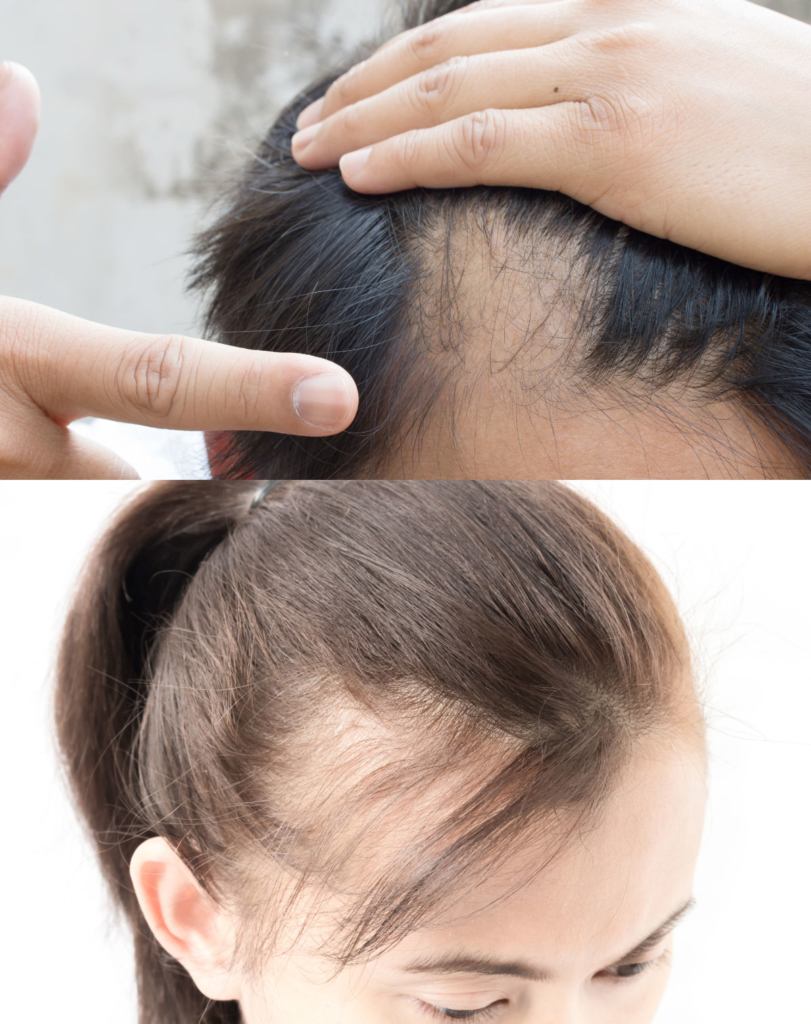Male Pattern Baldness
Male pattern hair loss, or androgenic alopecia, is a form of genetic hair loss and affects more than 50% of all men older than 50. Like alopecia areata, genetics cause male pattern hair loss, and it affects the levels of androgens, which are hormones regulating hair growth.
Male pattern hair loss weakens the growth cycles of hair in certain areas, causing the hair follicles to shrink. As the follicles shrink, they produce finer hairs. At some point, the hairs’ growth cycle ends, and they stop growing. With male pattern hair loss, alopecia begins at the crown of the head or temples, or it can present as a receding hairline in the form of an “M”.
Natural hair regrowth isn’t possible with male pattern hair loss, and the only viable hair loss treatments include PRP or hair transplantation.
Female Pattern Baldness
Male and female pattern hair loss is similar in various aspects, but women experience hair loss in a different pattern than men. Women generally start losing hair at their part line, and the hair at their temples may also begin receding. Female pattern hair loss is also less common than male pattern hair loss, especially before midlife.
Female pattern hair loss has hereditary causes and generally happens after menopause, which means hormones are responsible for male and female pattern hair loss. With the right treatment, hair regrowth and further hair loss prevention are possible with female pattern hair loss.
Alopecia Treatment Options
Various treatments are available for hair loss. Alopecia treatments for hair growth typically include medications, hair transplant surgery, or platelet-rich plasma (PRP) therapy.
A hair loss treatment addressing the underlying cause of hair loss may also restore hair growth. For example, if hair loss is due to hormonal changes, hormonal therapy may offer the best results.
Of all the modern treatments for hair loss, PRP is among the most effective. PRP is a suitable treatment for all hair conditions and involves injecting the patient’s own platelets at a high concentration into the scalp. The platelets heal the hair follicles, stimulating the growth of new hairs.
According to some studies, patients can see results within three months after receiving PRP. Hair and Skin Science specialises in the field of PRP treatments. If you are losing hair and looking for the best results, schedule a hair health check and consultation at our hair loss clinic.



